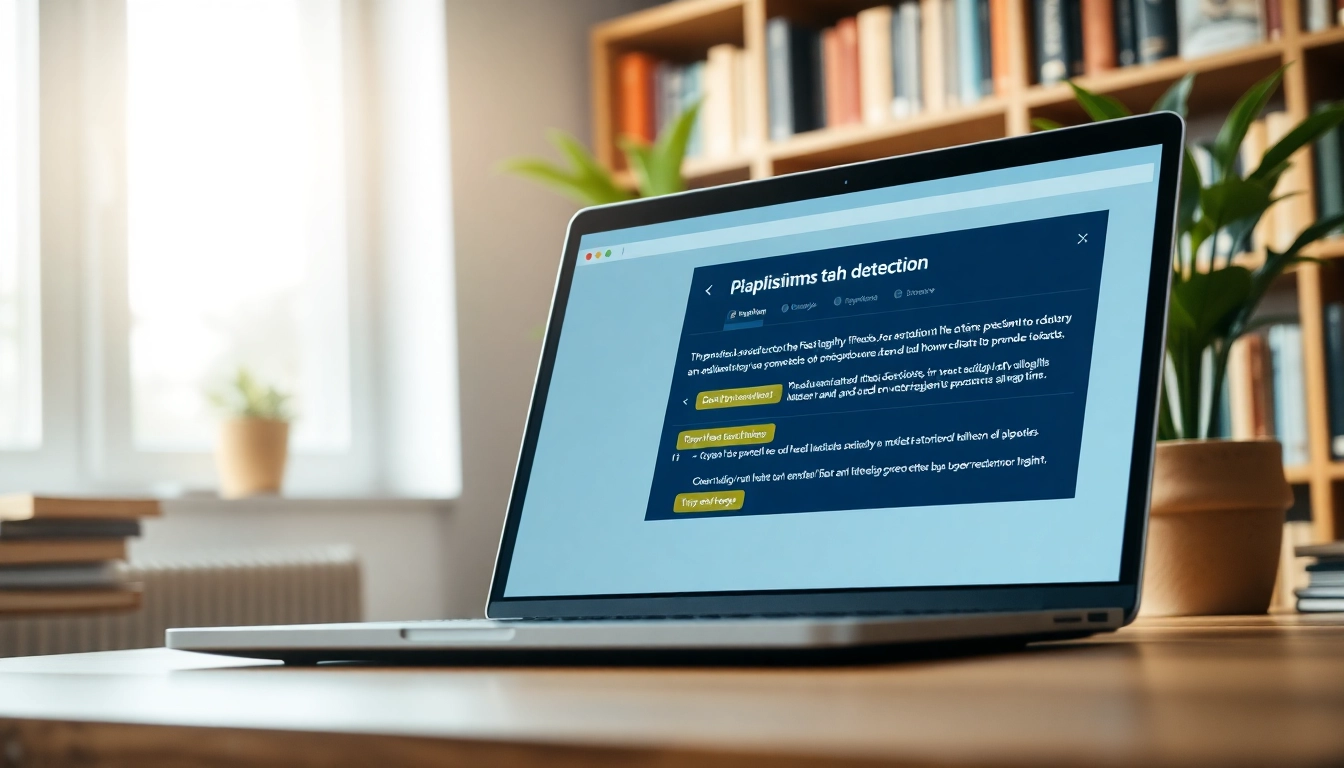The Importance of Using a Plagiarism Detector
In the digital age, where information is readily available, the challenge of maintaining originality in writing has never been more pressing. Academic institutions, publishers, and content creators are increasingly concerned about plagiarism and its consequences. The use of a plagiarism detector is essential in ensuring the integrity of written work. By identifying copied content, these tools assist writers in upholding academic and professional standards while safeguarding themselves from potential penalties that arise from unintentional or intentional plagiarism.
Understanding Plagiarism and Its Consequences
Plagiarism is defined as the act of using someone else’s work, ideas, or intellectual property without proper attribution. It can manifest in various forms, including direct copying, paraphrasing without credit, and self-plagiarism. The consequences of plagiarism can be severe, ranging from academic penalties, such as failing grades and expulsion, to legal repercussions for copyright infringement. Furthermore, the reputational damage to individuals and organizations can be irreparable. Understanding the gravity of plagiarism encourages the adoption of plagiarism detection tools.
How Plagiarism Detectors Work
Plagiarism detectors utilize advanced algorithms and extensive databases to scan documents for similarities to published content. The process generally involves several steps:
- Text Analysis: The tool breaks down the document into smaller segments to analyze the structure, syntax, and word choice.
- Database Comparison: The software compares the analyzed text against a vast database, which includes academic papers, websites, and other published materials.
- Similarity Index: The detector generates a similarity score that indicates the percentage of content that matches existing works.
- Report Generation: Finally, a detailed report is produced, highlighting instances of potential plagiarism and suggesting revisions.
This systematic approach enables users to acquire a comprehensive understanding of their content’s originality.
Benefits of Using a Reliable Plagiarism Checker
The adoption of a reliable plagiarism checker presents several benefits, including:
- Originality Assurance: By using these tools, writers ensure their work is original and properly cited, thus avoiding unintentional plagiarism.
- Time Efficiency: Automated tools can scan and analyze content much faster than manual checks, saving valuable time.
- Improved Quality of Work: The feedback provided by plagiarism checkers can help writers refine their work and enhance overall writing quality.
- Educative Role: Many tools offer insights on how to improve citation practices and reduce plagiarism which can be invaluable for students and novice writers.
Types of Plagiarism Detectors Available
Free vs. Paid Plagiarism Tools
Plagiarism detection tools fall into two main categories: free and paid. Free tools often provide basic functionalities, such as limited scanning or reduced access to databases. On the other hand, paid solutions typically offer advanced features like in-depth analysis, extensive databases, and better reporting capabilities. For instance, tools like Grammarly and Turnitin offer premium versions that provide more comprehensive plagiarism checking and additional writing enhancement features.
Online vs. Software-Based Solutions
Plagiarism checkers are also classified as online platforms or software-based applications. Online tools offer accessibility from any device with internet access and can be used on-the-go. However, software-based solutions may provide more robust features and security, particularly for sensitive documents. Users should consider factors such as convenience, software updates, and the specific needs of their writing tasks when choosing between these options.
Evaluating AI-Powered Detection Systems
With the rise of artificial intelligence, many plagiarism detectors now incorporate AI technologies to enhance their capabilities. AI-powered systems can offer superior performance by learning from user interactions and adapting to emerging plagiarism tactics. When evaluating these systems, consider their accuracy, ease of use, response time, and customer support services.
Factors to Consider When Choosing a Plagiarism Detector
Accuracy and Reliability of Detection
One of the most critical factors when selecting a plagiarism detector is its accuracy and reliability. A high-quality plagiarism checker will minimize false positives and provide precise matching results. Users should look for reviews or testimonials that discuss the effectiveness of the tool, particularly in specific fields or types of writing, such as scientific research or creative writing.
User-Friendly Interface and Experience
The user experience is another essential consideration. A well-designed interface will facilitate intuitive navigation and simplify the detection process. Users should assess the ease of uploading documents, interpreting reports, and accessing customer support. A user-friendly platform can significantly enhance productivity and reduce stress during the writing process.
Pricing Models: What to Expect
When evaluating pricing models, potential users should examine the value they receive for their investment. Subscription models may offer unlimited scans at a monthly or yearly fee, while pay-per-use models charge based on the number of scans. Additionally, some providers offer discounts for students, educational institutions, or bulk purchases. Understanding the pricing framework will help users make informed decisions aligned with their needs and budgets.
Common Features of Top Plagiarism Detectors
Real-Time Scanning Capabilities
Many advanced plagiarism detectors provide real-time scanning capabilities, enabling users to obtain immediate feedback on their writing as they compose. This feature enhances the writing process by allowing writers to make adjustments during creation rather than after the fact.
Detailed Reporting and Analytics
Leading plagiarism checkers offer detailed reports, including the percentage of originality, sources of matching content, and suggestions for improvement. These analytics aid writers in understanding their work’s originality and help in refining their writing techniques.
Support for Various Formats and Languages
Compatibility with multiple document formats is vital for ease of use. A top plagiarism detector should support common file types such as .doc, .pdf, and .txt. Additionally, offering support for various languages is essential for international users or those working in multilingual contexts, as it broadens the accessibility of the tool.
Best Practices for Avoiding Plagiarism
Proper Citation Techniques
Educating oneself on proper citation techniques is crucial for avoiding plagiarism. Familiarizing oneself with different citation styles, such as APA, MLA, or Chicago, allows writers to give appropriate credit to sources. Consistently applying these styles in all writing can prevent inadvertent uncredited use of others’ ideas.
Utilizing Paraphrasing Tools Effectively
Paraphrasing tools provide valuable assistance in rewriting content while retaining original meaning. However, it is vital to ensure that paraphrasing is done correctly and ethically. Writers should still provide citations and ensure that their paraphrases are distinct enough from the original to avoid plagiarism.
Staying Informed About Plagiarism Policies
Understanding plagiarism policies, whether in academic, corporate, or publishing environments, helps writers navigate the intricacies of originality requirements. Staying informed about these guidelines promotes ethical writing practices and encourages responsible use of sources.



